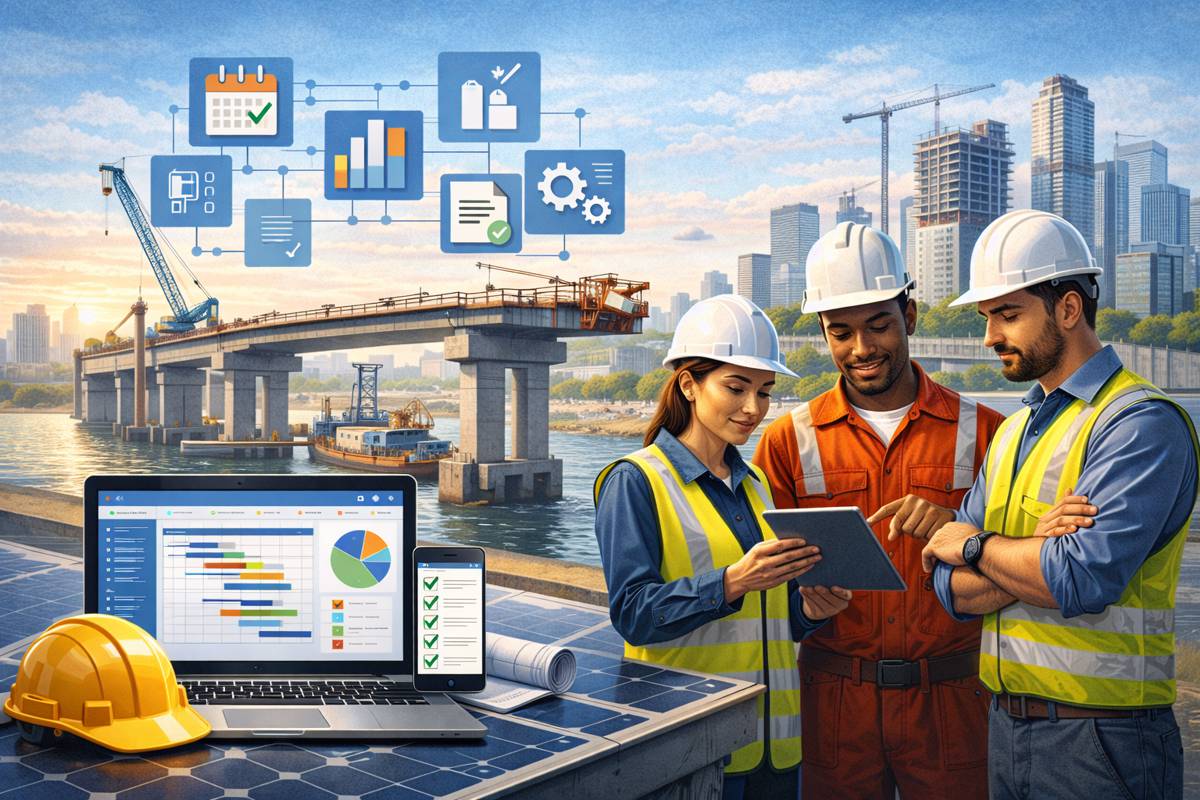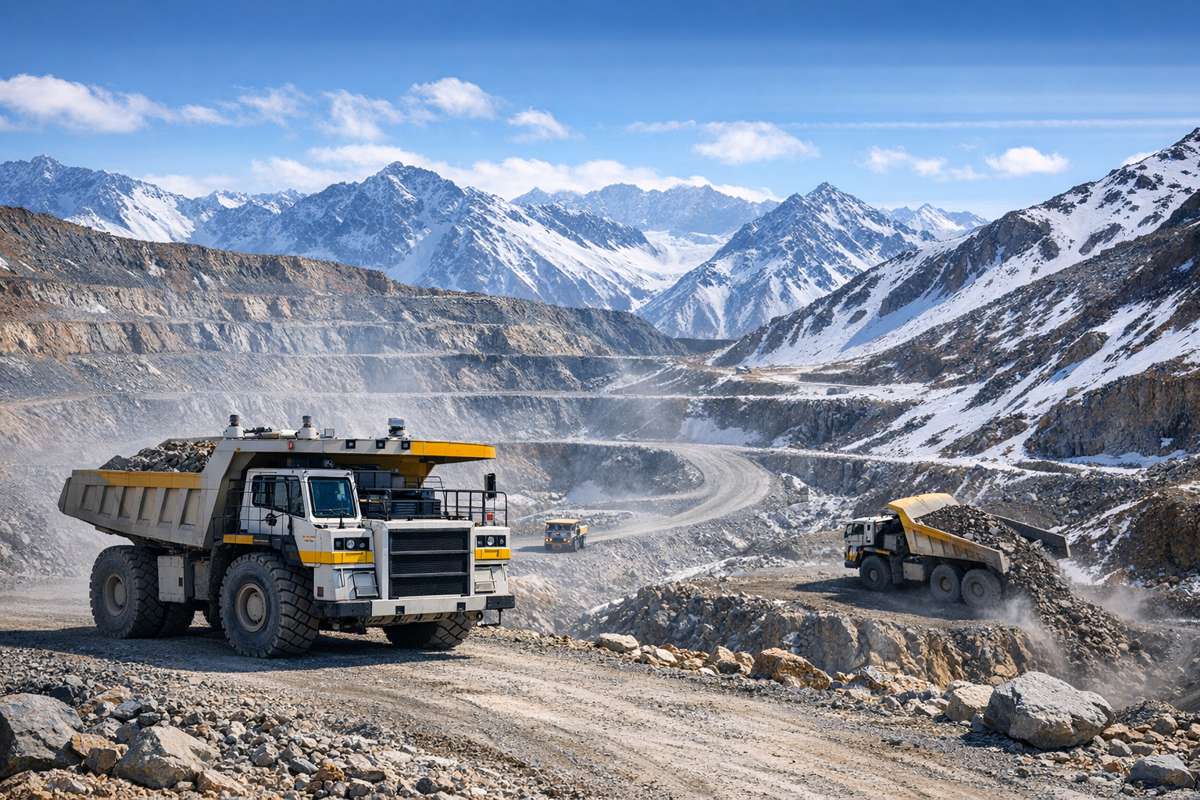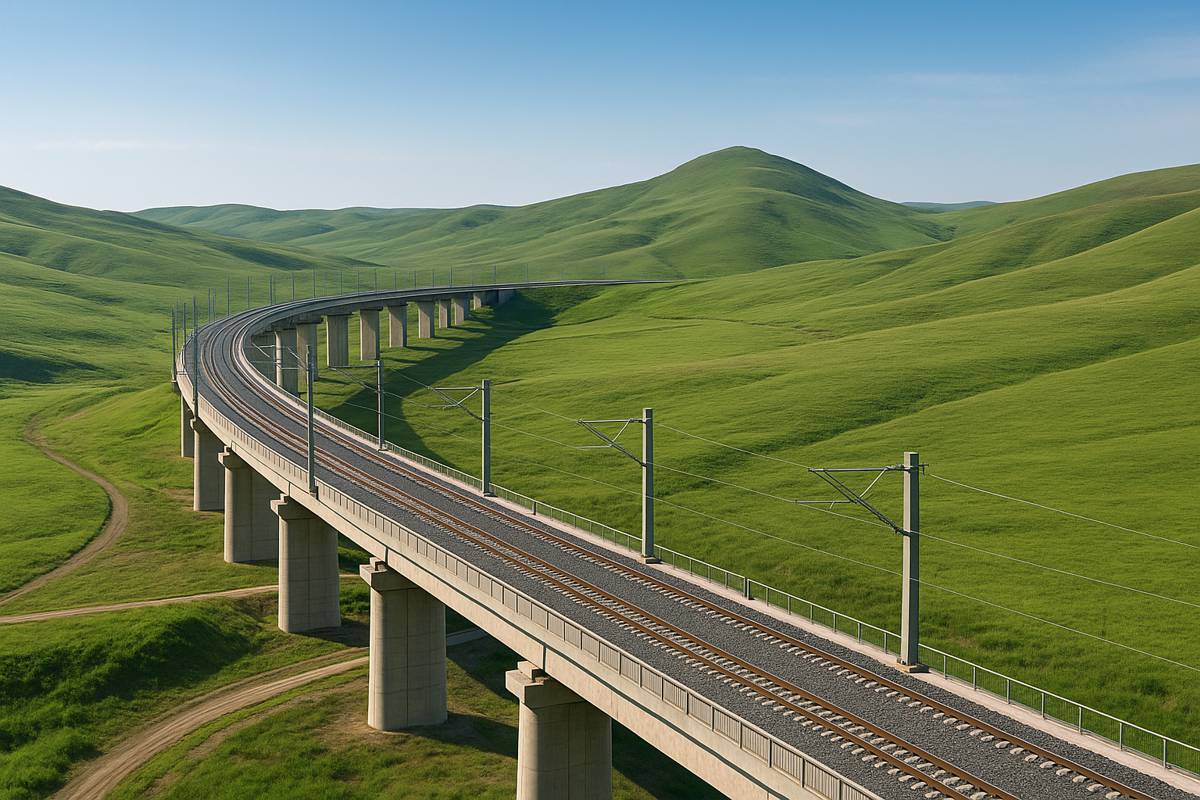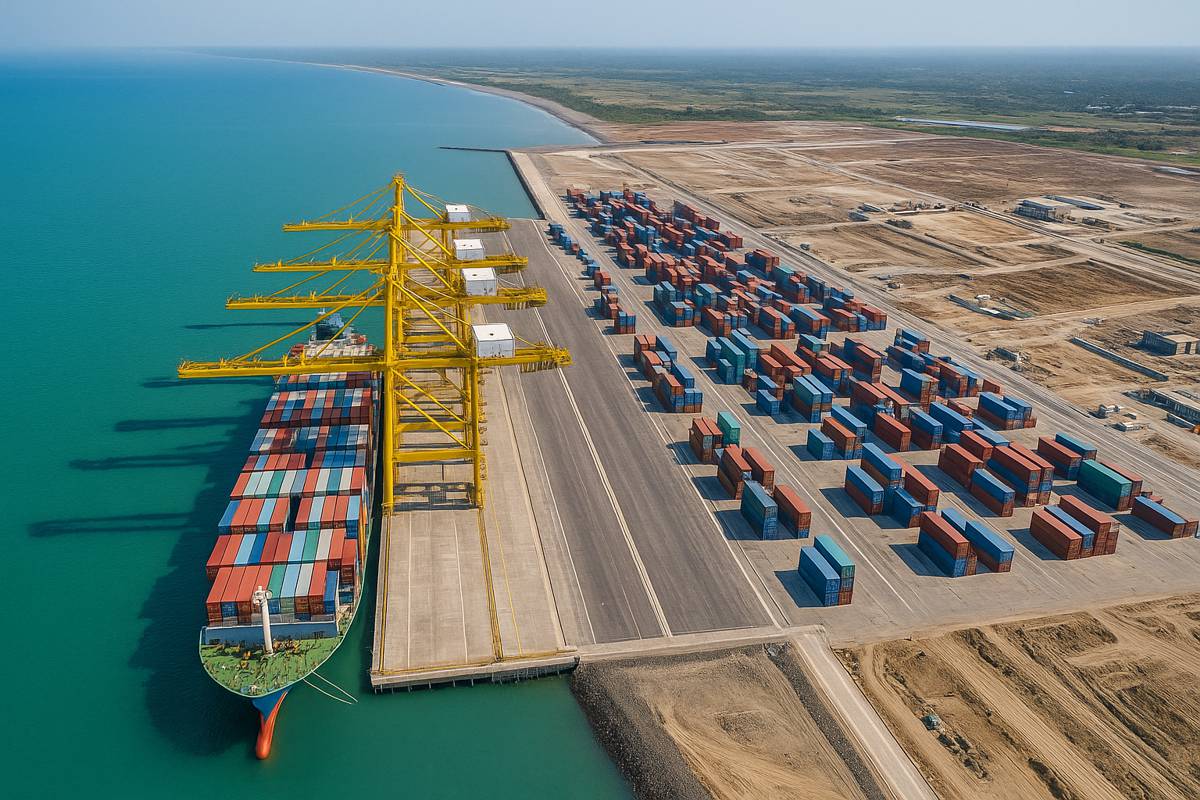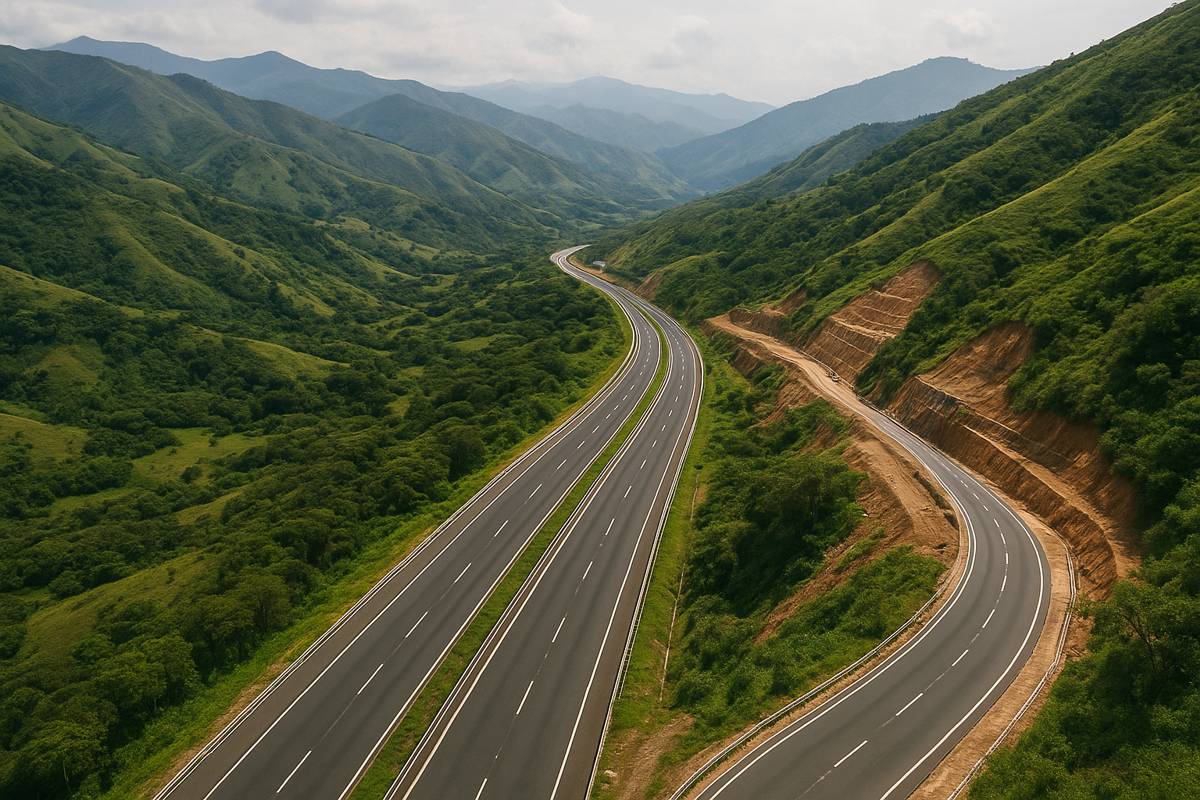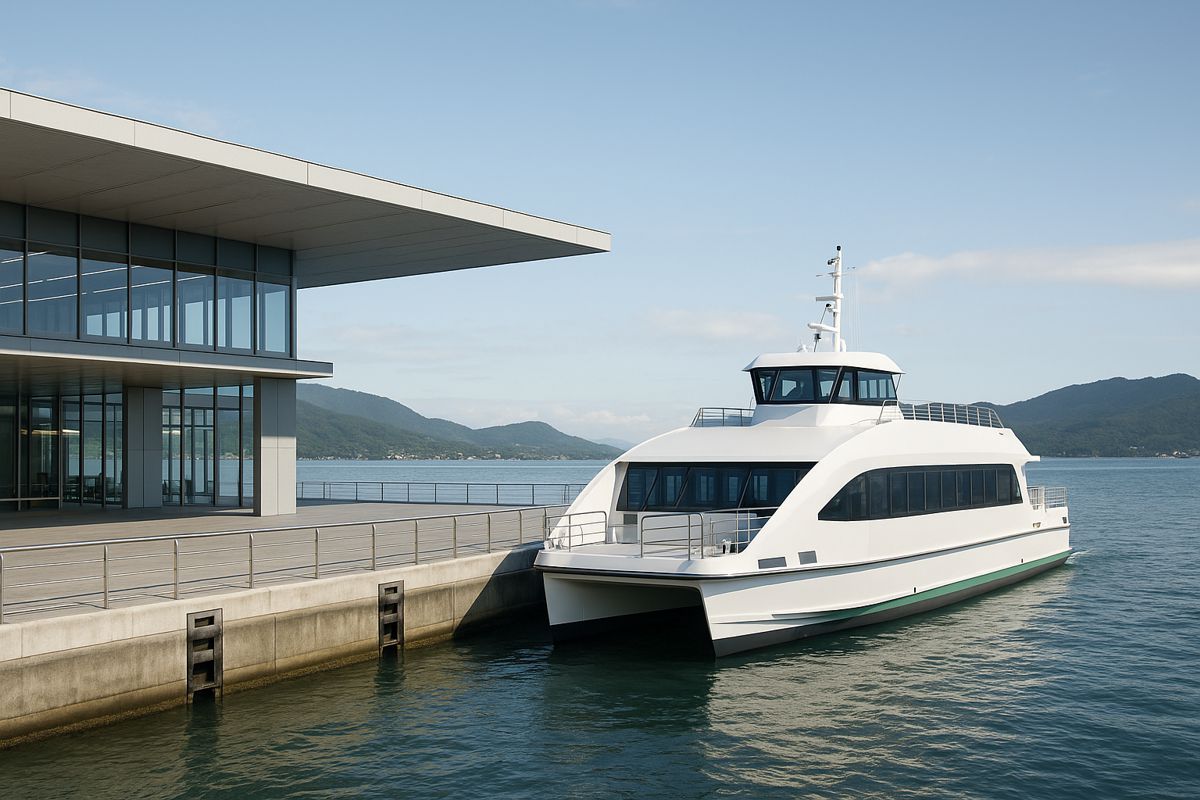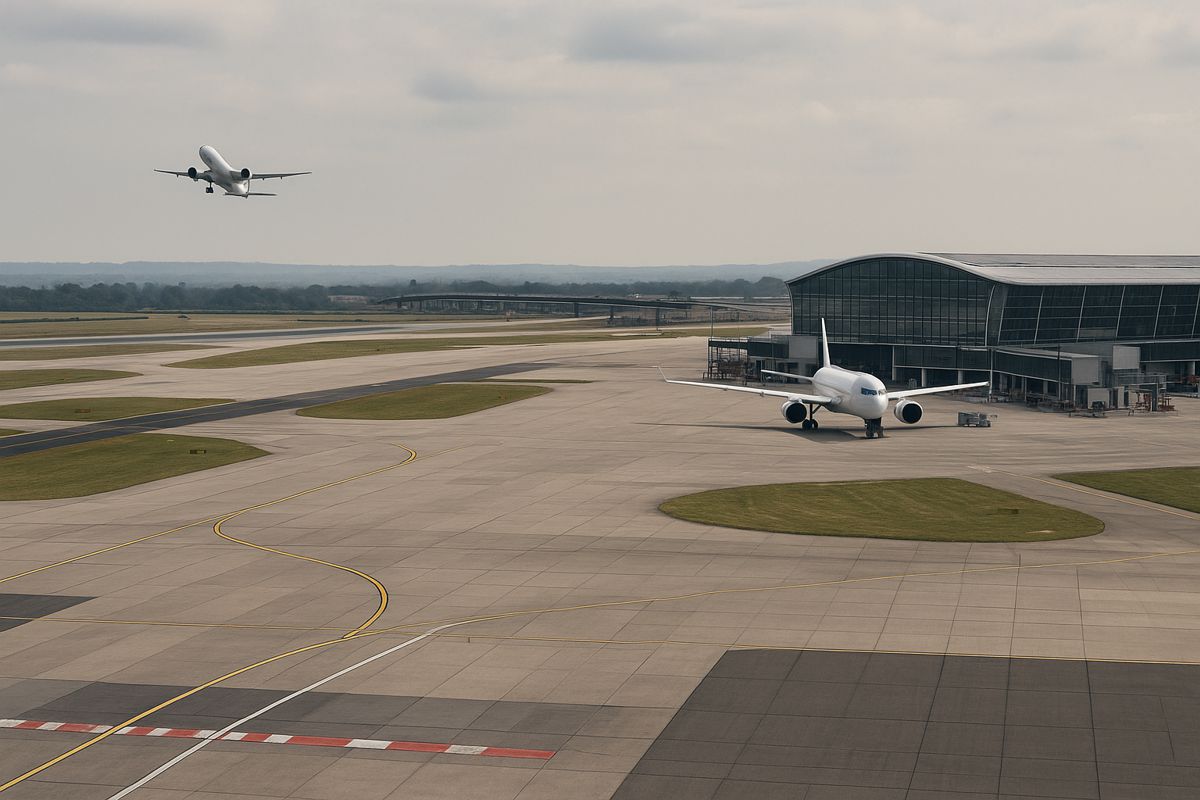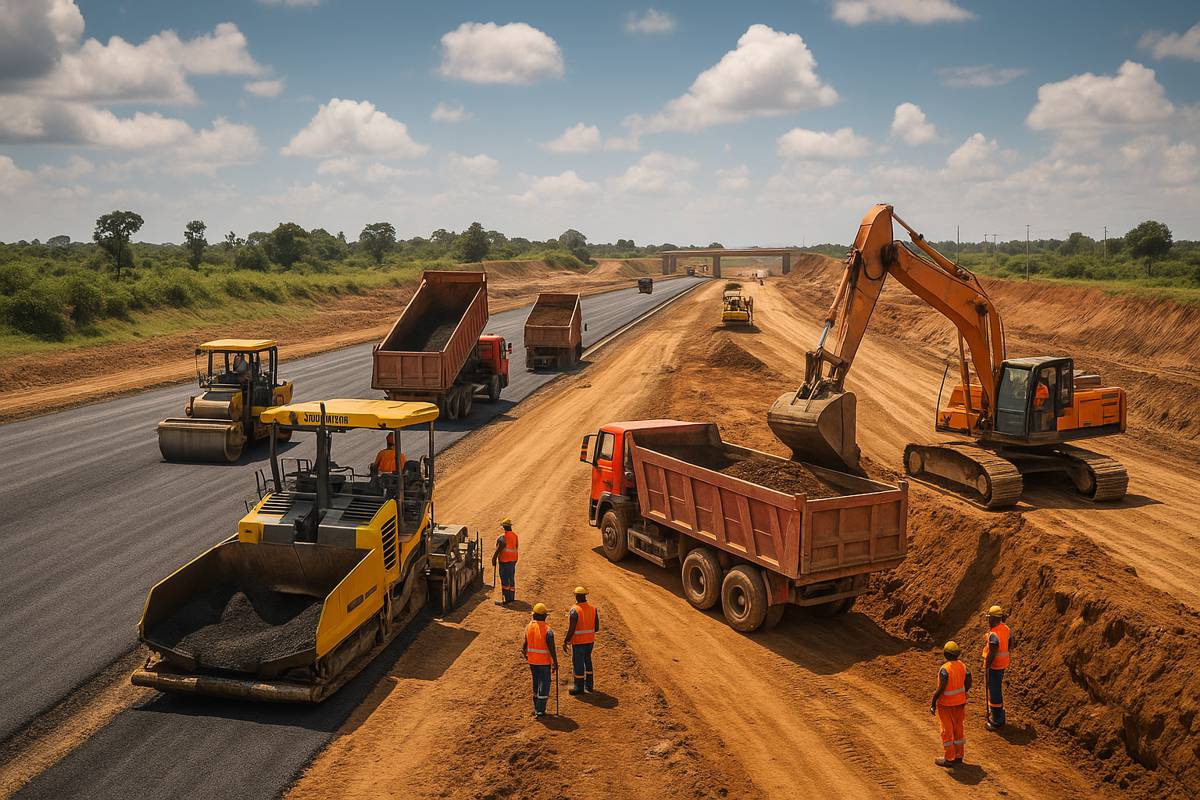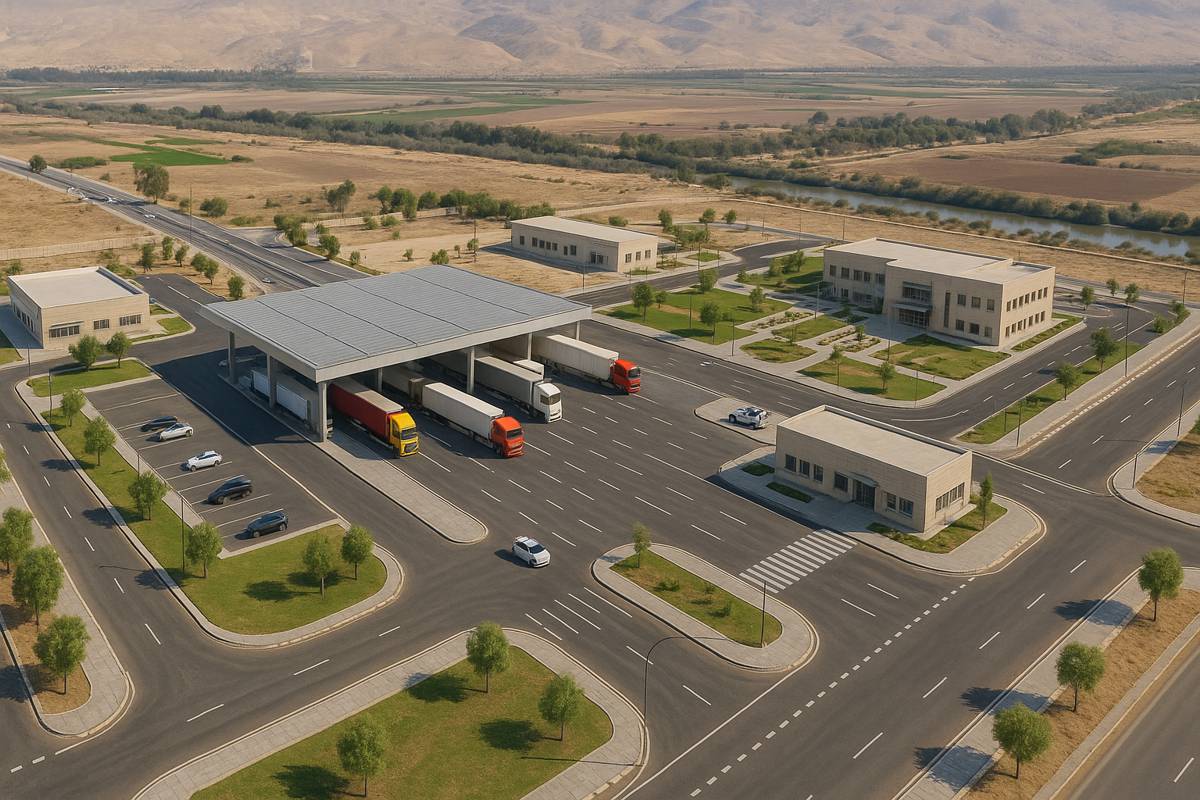Bentley’s 2025 Going Digital Awards Celebrate Real‑World Impact
I was proud to have attended this year’s celebration in Amsterdam in person, enjoying the passion and energy of an event that brought together more than 300 of the top geospatial and infrastructure professionals from around the world, and a heartfelt thank you to Bentley Systems for the invitation.
This year the event buzzed with the kind of practical optimism that only engineers, builders, and asset owners can bring to a room. It was a gathering where evidence mattered, data had a voice, and the results were written into bridges, railways, water networks, and power systems that keep modern life moving.
This year the Going Digital Awards succeeded in capturing a moment of inflection for infrastructure. After years of talking about digital twins, connected data environments, and AI, the industry is now using them at scale.
Bentley Systems, the infrastructure engineering software company that hosts these awards as part of their Year in Infrastructure conference to shine a light on the extraordinary work of project teams who are improving how infrastructure is designed, built, and operated.
Chris Bradshaw, Chief Sustainability and Education Officer, Bentley Systems, said: “These groundbreaking projects demonstrate how leading infrastructure engineering and construction companies, together with innovative owner-operators, are harnessing digital advancements, from connected data to AI, to transform project delivery and elevate asset performance. Your achievements are setting the standard for resilience, sustainability, and impact across infrastructure sectors.”
That message resonated throughout two packed days of keynotes, technical sessions, and finalist presentations. The short version is this. Digital is no longer a pilot. It is a performance engine. It is also a sustainability lever, a safety enhancer, and a decision‑making compass that helps leaders deliver better outcomes with fewer resources and less risk.
From vision to value
A striking pattern across this year’s winners is the normalisation of connected data environments (CDEs) and digital twins. Teams built collaborative hubs with ProjectWise to control information, model updates, and approvals, then extended those hubs into construction planning with SYNCHRO and into operations with AssetWise and iTwin services. The language of digital moved away from novelty and into the cadence of production management. And when you treat data like a first‑class asset, you get first‑class performance.
Artificial intelligence showed up in targeted ways. Few teams chased shiny objects, instead, they used machine learning to classify defects, detect risks early, or generate predictive maintenance insights at network scale. The net effect was labour saved where it counts and higher‑confidence decisions before anyone laced up their boots or mobilised a crane.
This year’s submissions backed sustainability claims with hard numbers. Carbon reduced. Waste diverted. Energy saved. Many projects also aligned with recognised frameworks, demonstrating a stronger understanding of how design choices ripple through construction and operations. The sustainability conversation felt less aspirational and more operational.
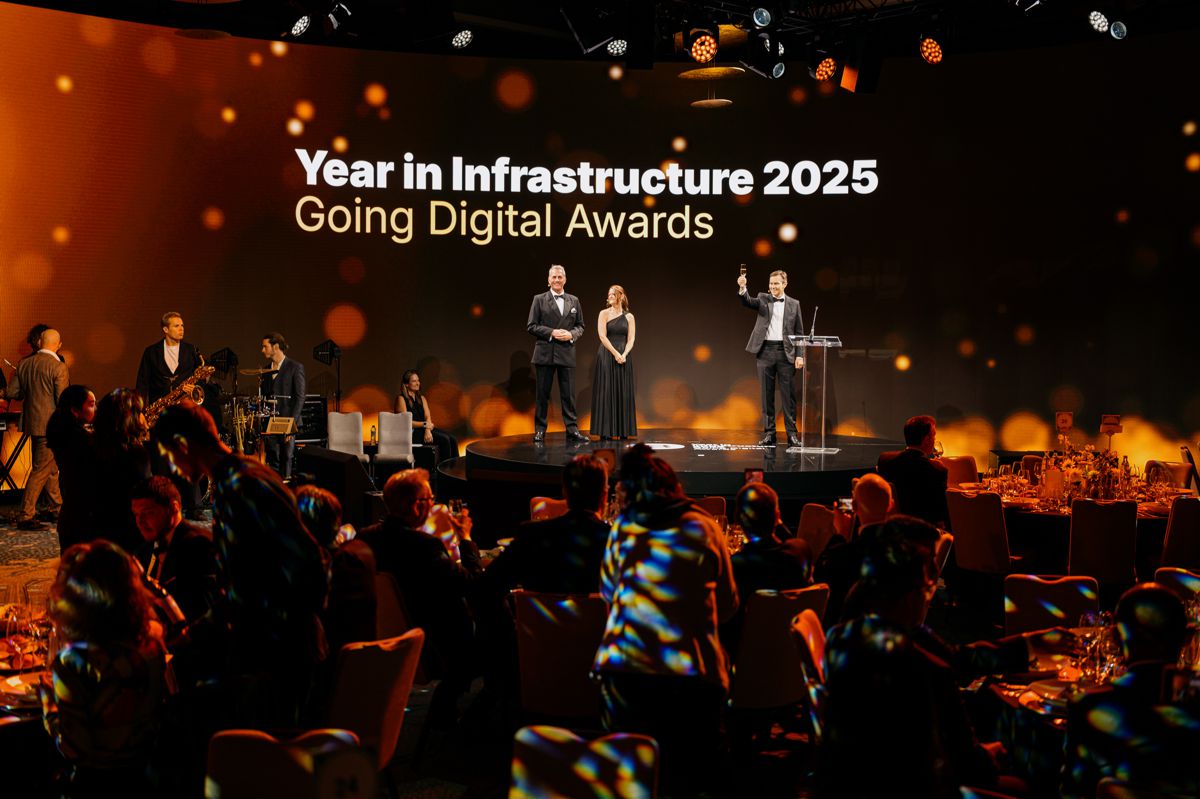
The Winners and Finalists
Project delivery
The Winner – Egis: Canal Seine Nord Europe
A 107‑kilometre, high‑capacity canal threading through 64 municipalities is a bold statement about modal shift, resilience, and regional competitiveness. Egis used ProjectWise and Bentley’s open modelling applications to build a 3D BIM reference model and common data environment that kept 370 users aligned across 1.2 terabytes of information. The results were felt where project managers live. Model generation time dropped by more than 60%. Overall productivity rose by over 40%. Rework fell away because teams could see, clash, and correct issues before they touched the site. The as‑built model will carry forward as an asset management backbone.
Finalist – Foth Infrastructure & Environment: Mississippi River Bridge at Lansing
Foth is steering Iowa’s first comprehensive digital bridge design from concept through construction on a complex Mississippi crossing. A single source of truth on the iTwin platform smoothed multidisciplinary coordination, with the model expected to trim the programme by 1.5 months and save USD 3.2 million. Beyond delivery, the digital record becomes the basis for safer inspections and smarter maintenance.
Finalist – Italferr: New Palermo–Catania–Messina Railway Connection
Modernising 185 kilometres of Sicilian rail is no small coordination exercise. Italferr’s cloud‑based verification workflows in ProjectWise and iTwin cut data loss by 95% and eliminated more than 4,500 interferences during design checks. Add 4D simulation with SYNCHRO, and the effect is a testable schedule that reduces uncertainty for everyone from designers to site managers.
Construction
The Winner – Deloitte and Vale: SYNCHRO 4D powering the world’s first iron ore briquetting plant
Transforming an ageing pellet plant in Vitória into a modern, lower‑carbon briquette facility required surgical planning. With Advanced Work Packaging and a 4D digital twin, the team linked over 1,500 work packages across three schedules. That visibility helped resolve 70% of critical errors before they reached the field and enabled a 300‑tonne cargo movement to be executed safely. The method is now baked into Vale’s broader programme, a sign of maturity that should make shareholders smile.
Finalist – Italferr: Digital construction site 4.0
Using SYNCHRO to stand up 4D progress monitoring, Italferr expects to reduce design errors by 30% and cut construction time by 22%, saving an estimated EUR 12 million. Logistics optimisation in the digital twin translates to 800 tonnes of carbon avoided. The real value is portability. Once the approach is proven, it scales across portfolios.
Finalist – Mortenson | McCarthy JV: Gaylord Pacific Resort & Convention Center
On a 36‑acre waterfront site in California, the joint venture mandated 4D modelling for every trade. Linking interiors and safety stages to the time‑phased model clarified sequence and space, helping the team finish six weeks early. Culture change is visible when contractors say the model is the meeting.
Bridges and tunnels
The Winner – Italferr: Digital twin for Serravalle Tunnel
For the Terzo Valico dei Giovi railway, Italferr integrated AI algorithms within an iTwin‑based digital twin to automate defect detection and enable real‑time monitoring. Inspection time fell by nearly 16% against traditional methods, with the added benefit of fewer site visits and reduced environmental impact. The well‑trodden hope of predictive maintenance looks far more real when the model is wired into sensors and routines that engineers trust.
Finalist – Pennoni: I‑95 Penn’s Landing CAP
Reconnecting Philadelphia with its waterfront involves an 11.5‑acre civic park over live traffic, with carefully choreographed clearance checks and aesthetics. In a connected design environment, Pennoni halved modelling time in key civil disciplines and created automated clearance verification. Accurate quantities and costings flowed from the model, helping the client manage expectations and inevitabilities.
Finalist – SENER: Salvador–Ilha de Itaparica Bridge
Challenging geology needed advanced geotechnical modelling. With Leapfrog and PLAXIS, SENER built a credible subsurface picture, improving design confidence and cutting effort by up to 20% compared with 2D approaches. Less guesswork, fewer late changes, better foundations.
Roads and highways
TheWinner – Jabatan Kerja Raya Sarawak: Sarawak Sabah Link Road Phase 2
In northern Sarawak, connectivity is a lifeline. A fully integrated approach with ProjectWise, OpenRoads, SYNCHRO, and iTwin Capture halved design time and cut overall costs by 30%. Most striking was the environmental stewardship. By using digital modelling to steer alignments and manage construction, impact on protected areas and wildlife dropped by 80%, while the carbon footprint fell by 30%.
Finalist – PowerChina ZhongNan Engineering: Ecological Highway to Detian Transnational Waterfall
Threading a 13.5‑kilometre highway through a sensitive tourism corridor required exceptional visual communication and optioneering. LumenRT enabled stakeholders to see, challenge, and agree design options early. Collaboration improved by 60%, design risks were resolved up‑front, and the team saved around CNY 6 million through fewer changes and better coordination.
Finalist – Arcadis: Warringah Freeway Upgrade
On Australia’s busiest urban corridors, model‑based delivery avoided more than 2,000 clashes and saved 324,000 work hours. Earthworks optimised in OpenRoads have the potential to avoid 450,000 tonnes of carbon, while 4D staging with SYNCHRO accelerated the programme by up to eight weeks. It is what happens when digital is not an overlay but the operating system.
Rail and transit
The Winner – PT Kereta Api Indonesia: Smart Infrastructure with AssetWise Linear Analytics
Managing 7,000 kilometres of track across islands is an exercise in logistics and resilience. KAI standardised data and stitched systems together with AssetWise and iTwin, then infused AI for risk detection. Predictive maintenance shrank track possession windows by two to four hours per segment and lifted efficiency by up to 40%. The benefits extend beyond maintenance. Longer asset life and lower material waste mean a smaller footprint and a steadier budget profile.
Finalist – Network Rail: Severn Tunnel digital twin
An 1886‑vintage, 7‑kilometre tunnel is a lesson in history and humidity. Using Open applications, ProjectWise, and iTwin, Network Rail cut site visits by half and built a federated model as a shared, living reference. As real‑time sensors feed into the twin, proactive interventions replace reactive fixes, saving carbon and keeping trains moving.
Finalist – PT Waskita Karya: Jakarta LRT Phase 1B
In a tight urban corridor, Waskita combined reality capture, BIM, and 4D simulation to keep works on schedule with less disruption. Data exchange improved by 80%. Field inspections dropped by a fifth. The team saved 7,356 litres of fuel and nearly USD 15 million, proof that meticulous planning is a climate strategy as much as a delivery tactic.
Energy production
The Winner – Baosteel Engineering & Technology Group: Digital intelligent steel plant
An intelligent green facility with an annual capacity of 310,000 tonnes was designed and delivered under a six‑month deadline using a connected digital twin. Collision rates dropped by 9%. The design cycle halved. Construction finished 92 days sooner, avoiding CNY 20 million in rework. Energy intensity per tonne fell by 8%, equating to 12,000 tonnes of CO₂ saved each year. When an industrial plant becomes a data product, sustainability follows.
Finalist – PT Wijaya Karya (Persero) Tbk: RDF Jakarta
A plant that processes 2,500 tonnes of municipal waste a day is as much a social project as an engineering one. With ProjectWise, iTwin Capture, iTwin IoT, and SYNCHRO, the team turned fragmented workflows into a real‑time digital ecosystem. The result was 30% faster delivery, 15% lower costs, and 100,000 tonnes of CO₂ avoided annually through fuel substitution. It is a textbook case of digital delivering environmental and economic dividends.
Finalist – SIDRI: Caiziba pumped‑storage in complex karst
Karst geology can turn assumptions into sinkholes. By unifying 3D geological modelling, libraries, and construction simulation, the team removed 1,850 conflicts and saved roughly CNY 4.5 million in rework. Carbon reductions came from optimised steel and concrete quantities and a 42‑day shorter programme. Digital in the subsurface is an insurance policy that pays out early and often.
Subsurface modelling and analysis
The Winner – Fervo Energy: Cape Station
At 500 megawatts across the first two phases, Cape Station is a big swing for next‑generation geothermal. Using Oasis montaj and Leapfrog within Seequent Central, Fervo built dynamic 3D models accessible across five offices and three time zones. Those models sharpened drilling predictions and de‑risked the power plant design, accelerating planning and financing. Geothermal needs speed and certainty. This is both.
Finalist – Flux Energy Solutions: AI‑driven geothermal optimisation
Using Volsung’s geothermal simulation environment, Flux managed 3,000 scenarios, cut modelling time by 80%, and compressed a five‑year effort into 12 months while trimming costs by 76%. The lasting value is a model that learns with new data, creating an evergreen decision engine for the field.
Finalist – Anglo American: Integrated risk management for open pit operations
Barro Alto’s geotechnical risks demanded a single place for truth. Leapfrog with Seequent Central and ProjectWise created dynamic models that cut update time by 75% and improved governance. For miners, that means fewer surprises, safer slopes, and a method ready to roll out globally.
Structural engineering
The Winner – AVS Engineers with ISID and partners: Fairmont Udaipur Palace
A 500,000‑square‑foot luxury destination in Rajasthan had to respect terrain, climate, and culture. With RAM and STAAD, the team simulated wind and seismic activity across irregular forms, trimmed four months from the schedule, and saved 420 metric tonnes of steel and 2,400 cubic metres of concrete. That equates to around 800 tonnes of CO₂ not emitted. Heritage, hospitality, and high‑performance engineering, working in concert.
Finalist – Hyundai Engineering: Automated design for modular and precast
STAAD was used to automate transport and lifting analysis and optimise PC concrete design. Outsourcing costs fell by more than KRW 750 million annually, and design time dropped by up to 80%. Automation is the quiet revolution in structural engineering, and it is picking up pace.
Finalist – Delhi Metro Rail Corporation: New Delhi Station Skywalk
In a dense urban setting, DMRC used OpenBridge, RAM, and STAAD to explore options quickly and build a digital twin that minimised rework and materials. Concrete usage dropped by up to 16%, saving approximately INR 6 million. Equally important, the inclusive design improves the daily experience for thousands of commuters.
Geospatial and reality modelling
The Winner – Al Madinah Region Development Authority: Manarah Urban Data Platform
At the intersection of heritage, tourism, and urban growth, MDA chose iTwin Capture to generate reality models across 55 square kilometres. Acquisition time on a 6.6‑square‑kilometre zone fell by 43%. Integration with Cesium put 3D visualisations in the hands of decision‑makers. The platform is preserving 57 heritage sites and 1.45 square kilometres of urban agriculture while preparing Madinah for data‑driven planning at scale.
Finalist – Mott MacDonald: Bristol Harbour condition survey
Remote sensors and 3D capture replaced risky, time‑consuming inspections above and below the waterline. By placing the data and models in a web‑based Cesium environment, the team achieved 50% gains in collection efficiency and 60% improvements in defect identification. The harbour gains a living record that limits closures and protects habitats.
Finalist – Haskoning: Holyhead Deepwater Jetty inspection
Thirty‑five thousand high‑resolution images, processed into an engineering‑grade mesh, fed into iTwin Experience for real‑time access. Time savings of 60% compared to boots‑on‑structure inspections, with fewer safety exposures and lower travel emissions. It is hard to argue with results that are safer, faster, and clearer.
Water and wastewater
The Winner – PT Wika Tirta Jaya Jatiluhur: SPAM Regional Jatiluhur I
A clean water system serving 380,000 people in West Java leaned on ProjectWise and a digital twin to coordinate disciplines and simulate risks. Approvals accelerated by half. Rework worth IDR 12 billion was avoided. Delivery time fell by a quarter. Hydraulic modelling with OpenFlows delivered an 18% energy saving and cut 1,200 tonnes of carbon. iTwin IoT brings predictive monitoring into daily operations.
Finalist – Empresas Públicas de Medellín: Primary aqueduct optimisation
OpenFlows enabled EPM to model five plants in mountainous terrain, turning a month of manual analysis into hours. Predictive scenarios showed ways to guarantee service for 30 years, saving 117 tonnes of CO₂ and nearly USD 18.6 million. For a city of 1.4 million families, the stakes are as social as they are technical.
Finalist – CSCEC AECOM: Urban flood control in Northwest China
Combining OpenFlows with OpenRoads and 3D reality modelling, the team reduced design errors by 90% and pipe waste by 15% while cutting the construction period by 40%. Carbon fell by 500 tonnes and flood risk was eliminated over 1,146 hectares. Climate adaptation is infrastructure’s defining test. This is what good looks like.
Transmission and distribution
The Winner – China Energy Engineering Group Guangxi Electric Power Design Institute: 500 kV Nanning GIS+BIM digital project
In hilly terrain and across multiple substation disciplines, a connected BIM platform with Open applications, ProjectWise, and SYNCHRO shortened design by 10%, resolved 85 collisions, and reduced on‑site construction changes by nearly 92%. A 5% construction period reduction is meaningful on critical grid projects. The 3D models now support intelligent operations and maintenance.
Finalist – APD Global: Digital transformation of 132 kV Bunning Lake Substation
Reality modelling and integrated 3D design within ProjectWise created a digital twin that cut both delivery time and costs by 15%, improved stakeholder communication, and reduced material waste and energy use.
Finalist – BAM Infra Netherlands: Mainstation Schiphol – Amsterdam Airport
With SYNCHRO’s 4D planning, BAM optimised logistics in tight spaces, reducing transport movements by a quarter, addressing 85 planning and safety risks, and saving EUR 525,000. The programme finished four months faster with zero safety incidents and lower emissions. When safety, schedule, and sustainability all tick up, culture changes stick.
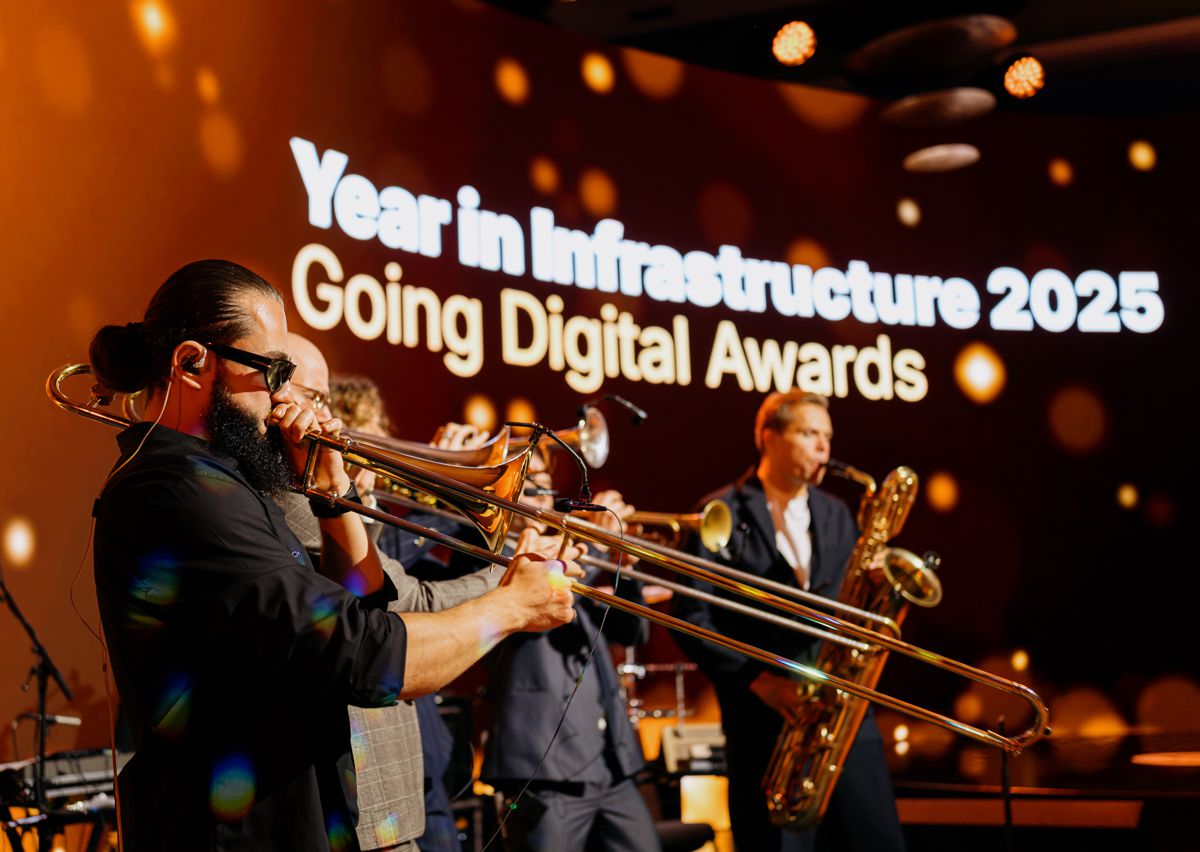
Special recognitions
The Founders’ Honors
Chosen by Bentley’s founders, Founders’ Honors recognise exemplary projects and organisations aligned with the company’s mission to advance the world’s infrastructure for better quality of life.
This year’s honourees are:
- AECOM, United Kingdom – Old Oak Common Great Western Railway Station Rail Systems
- Ansys RF Channel Modeler for NASA Lunar Mission Planning, The Moon – NASA Lunar Mission Planning for Ground Subscribers on the Moon
- Aquawolf, United States – From Fire Zones to Storms: A Case for Efficient and Smart Pole Modelling
- Arcadis, Australia – Coffs Harbour bypass
- Aurecon, New Zealand – Digitising Urban Ground: Transforming Subsurface Engineering
- citiME Consultancy LLC, United Arab Emirates – Micromobility Modelling in Abu Dhabi’s Strategic Transport Model
- DC Water, United States – From Blueprint to Reality: DC Water’s Digital Twin Implementation
- DPR Construction, United States – Building with Care: Lean 4D Planning for Children’s Hospital
- Environmental Systems Lab, Cornell University, United States – Energy Atlas: A Digital Twin for Decarbonising Ithaca’s Building Stock
- Forte and Tablada, Inc., United States – 17th Street Canal Pump Station Digital Twin
- Geoambiente S/A, Brazil – High‑Resolution Modelling for Groundwater Remediation Using Leapfrog
- Kaunas University of Technology (KTU), Lithuania – Digital Twin for Buildings Operational Carbon Evaluation
- Leviatan Group, Romania – Optimised 4D Planning for Military Educational Campus
- Ormat Technologies Inc., Dominica – Roseau Valley Geothermal Project
- PowerChina Henan Electric Power Survey & Design Institute Co., Ltd., China – Substation Flood Risks Assessment, Monitoring, and Early Warning System
- PT Hutama Karya, Indonesia – Trans Papua Road – Mamberamo–Elelim section
- PT Pertamina Geothermal Energy, Indonesia – Lumut Balai Unit‑3
- Shanghai Investigation, Design & Research Institute Co., Ltd., China – Digital Innovation in the Full Lifecycle of Offshore Wind Power
Bentley‑Envision Award for Sustainable Infrastructure
This award recognises a Going Digital Award project that marries technical excellence and economic value with measurable environmental and social impact. Reviewed by the Institute for Sustainable Infrastructure’s Envision programme in partnership with Bentley’s Sustainability team, the 2025 recipient is:
- GeoStruXer, Saudi Arabia – Seismic Rehabilitation of Creeping Ground using Sustainable Micropiled PTRaft
If there is a single thread running through these special accolades, it is this. Data is a means, not an end. What matters is how it changes lives on the ground, how it steers capital into systems people can trust, and how it equips teams to build with less waste and more foresight.
Educator of the Year
The Educator of the Year Award honours academic professionals who bring industry closer to the classroom with fresh methods, impactful engagement, and hands‑on technology. This year’s winner is:
- Irfaan Peerun, Griffith University, Australia
The sector’s talent pipeline will be stronger for it, and the next generation of engineers will be better prepared for an industry where digital literacy is table stakes.
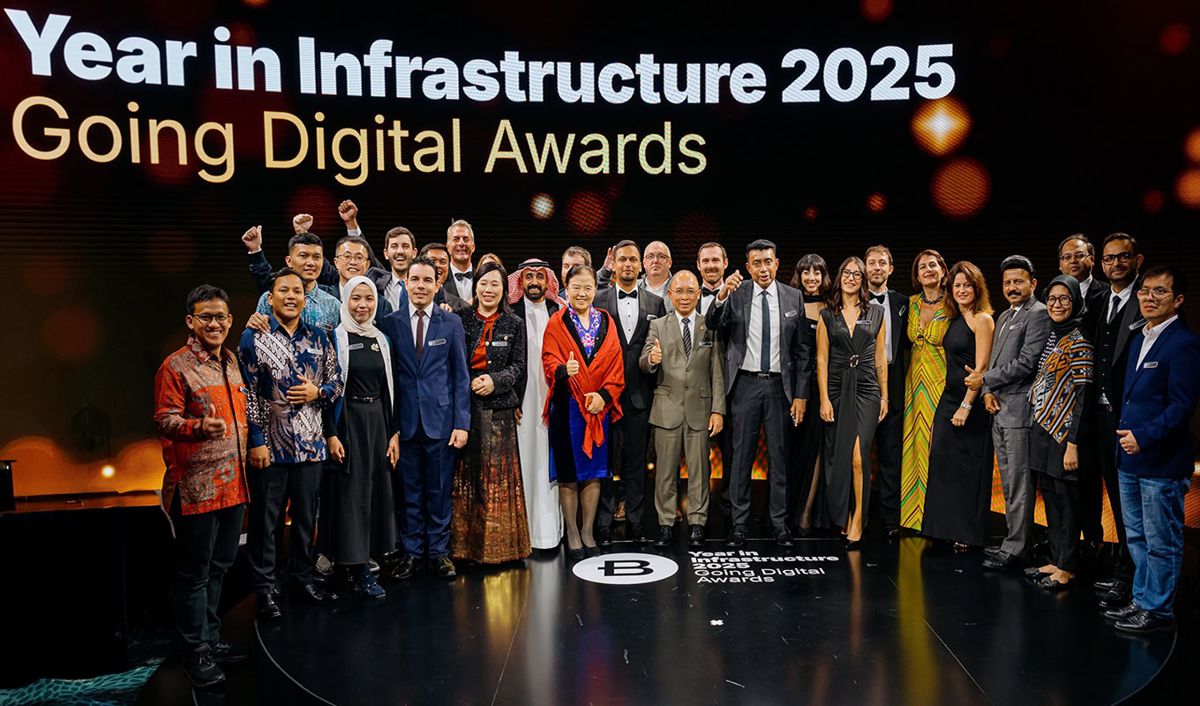
The Bentley technology stack in practice
It is tempting to treat software names as simple product labels, yet the real power lies in how the companies above are using these components to create a continuous, data‑driven workflow from concept through operations. Each application in Bentley’s digital ecosystem plays a distinct but complementary role, turning fragmented processes into an integrated lifecycle.
ProjectWise acts as the backbone of the Connected Data Environment (CDE), governing every document, model, review, and approval across project stakeholders. It enforces version control and traceability, ensuring that designers, contractors, and owners work from the same verified source. For teams managing vast multidiscipline projects across continents, ProjectWise becomes the digital glue that keeps collaboration coherent and auditable.
Open Applications, including OpenRoads, OpenBridge, OpenBuildings, OpenFlows, OpenTunnel, and others, deliver the domain‑specific engineering power. They generate high‑fidelity 3D models rich with metadata, enabling accurate quantities, analyses, and simulations. Each application feeds structured information into the CDE, where it can be combined, compared, or reused downstream. In effect, they form the creative engine room where engineering intent becomes digital reality.
SYNCHRO then connects these design models to time, space, and safety. It links geometry with schedules, allowing planners to visualise sequences, assess logistics, and detect potential clashes long before they occur on site. By converting abstract programmes into tangible 4D simulations, SYNCHRO transforms project management into a visual science, helping to avoid wasted effort, improve safety, and shorten delivery cycles.
At the heart of Bentley’s digital twin approach sits the iTwin Platform and iTwin Experience. These services integrate data from multiple sources, monitor change across versions, and provide secure visualisation through intuitive dashboards. Reality capture, IoT sensor data, and live operational information can all be layered into the twin, giving owners a single contextual view of what’s happening in both design and the physical world. The result is actionable insight, decisions backed by evidence rather than assumption.
AssetWise carries the baton into long‑term operations and maintenance. It manages inspections, condition states, and intervention priorities, ensuring that assets remain safe, efficient, and compliant throughout their lifecycle. By linking back to the design and construction models, AssetWise closes the loop, creating an executable digital thread from concept to handover and onward to everyday Operations and Maintenance routines.
Together, these technologies form a resilient digital ecosystem. The winning projects in Amsterdam demonstrated that when these tools are deployed in concert, with discipline, clear governance, and collaboration, they deliver measurable gains with faster approvals, reduced rework, improved sustainability, and smarter use of capital. The technology stack is no longer a toolkit, it is the operating system of modern infrastructure.
A reflection of the industry
The Year in Infrastructure conference has long been more than an awards ceremony. It is a reliable barometer of where digital engineering, data management, and design technology are truly heading. Each year, it reflects the industry’s pulse, what technologies are maturing, which ideas are fading, and where investment and innovation are converging. This years event in Amsterdam underscored three clear market signals that will shape infrastructure delivery for years to come.
Convergence of GIS, BIM, and operations data is accelerating
Geospatial intelligence, engineering design models, and operational datasets are finally beginning to occupy the same digital space. Cities and asset owners no longer want fragmented systems, they want a single, unified context that captures every stage of an asset’s life. The ability to merge geospatial awareness with live performance data allows decision‑makers to view networks holistically, anticipate bottlenecks, and prioritise investment based on evidence. Teams that can deliver this single operational picture, rather than juggling multiple software stacks, are positioning themselves as indispensable partners in digital transformation.
AI will be judged by outcomes, not demos
The conversation around artificial intelligence has matured dramatically. The most impressive projects in Amsterdam didn’t showcase AI for novelty, they deployed it where it delivers measurable value. Machine learning and analytics were used to reduce inspection overheads, flag potential risks early, and extract meaningful insight from complex data streams. Predictive maintenance, automated classification, and generative schedule optimisation have moved from experimentation to proven practice. The takeaway is clear: the winners will be those who embed AI into practical workflows that deliver safety, speed, and sustainability, not those who simply talk about it.
Sustainability is now audited by finance
Sustainability has moved from moral imperative to financial metric. Increasingly, lenders, investors, and public agencies are tying funding to measurable performance indicators such as carbon reduction, circular material use, and resilience benchmarks. Green bonds, ESG‑linked loans, and carbon‑based procurement criteria are becoming standard. Projects that can provide verifiable digital evidence of their environmental impact will not only earn public trust but also unlock preferential financing. The message to infrastructure leaders is unmistakable: sustainability isn’t an optional extra; it’s a competitive advantage, and digital traceability is the proof that makes it bankable.
Together, these signals point to an industry embracing convergence, accountability, and measurable value, a sector in which technology is no longer a sidecar but the engine driving sustainable growth.
Building on the momentum
There is a clear playbook emerging from this year’s winners. Standardise data – Visualise the plan – Simulate before you mobilise – Align delivery with operations – Then share the lessons.
If more teams follow that arc, infrastructure will be delivered faster, cost less, pollute less, and serve people better. That is a future everyone in the room could get behind.








